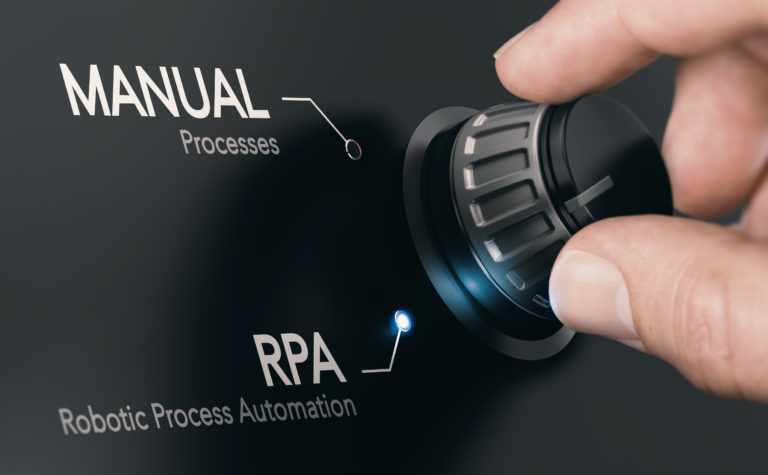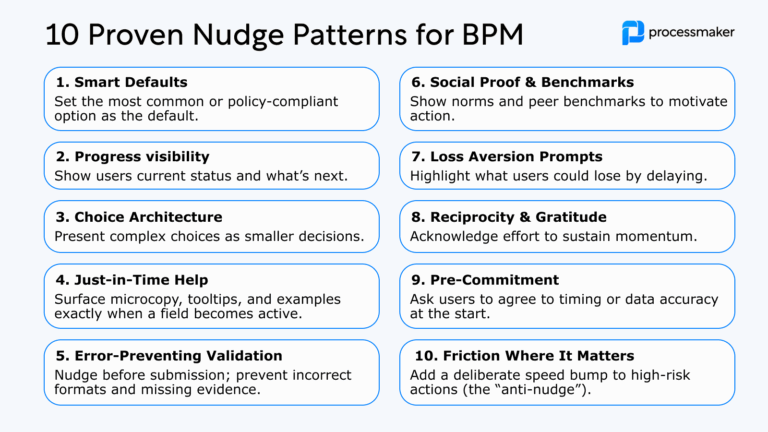Many organizations are finding it extremely difficult to manage their business processes. Further, automating a bad process doesn’t necessarily make it better – it only makes it less costly in the short run. The overall objective should be geared towards making processes more effective and efficient. Organizations with a process-centric mentality execute a streamlined effort around improving their processes.
Below are some methods for business process optimization:
- Improving workflows
- Reducing data silos and bottlenecks
- Agility to changing conditions
- Automation of optimization process
In the digital era, companies must embrace a strategy that includes a thorough digital transformation. When technologies are used for effective business process management, there are many underlying and imminent benefits such as:
- Quality assurance
- Increased transparency
- Reduction of risks and potential risks
- Efficient use of resources
- Consistency
- Industry/regulatory/governmental compliance
In fact, BPM is one of the trendiest topics in organizational management today – only matched recently by robotic process automation (RPA). Yet, there is still the underlying assumption that BPM and RPA are competing methodologies. This myth couldn’t be further from the truth. In fact, RPA and BPM can work together seamlessly as part of a multi-faceted process excellence solution. Keep reading to learn more.
RPA Needs BPM
In the broadest sense, RPA uses bots to replicate a human activity. Although, it should not be confused with artificial intelligence (AI). AI does offer many business applications, but RPA cannot learn from experience. In addition, RPA does not interpret meaning like AI. As a result, RPA helps to speed up the workflow of repetitive, menial tasks.
RPA is not designed to replace humans entirely. Although, according to Gartner, RPA can be best utilized when organizations are careful to configure systemized expectations and how the bots can be used as part of automation and digital transformation strategy.
As an industry, Forrester predicts RPA will grow to $2.9 billion in 2021. Moreover, Deloitte believes that within the next five years RPA will obtain “near-universal” adoption. However, RPA cannot solve procedural issues and workflows requiring human decision making. On the other hand, RPA can be used to make existing BPM even more effective. Is this starting to make sense? Let’s dig a bit deeper in the next section.
“The relationship between technology and people has to change in the future for the better, and I think RPA is one of the great tools to enable that change.” – Leslie Willcocks, professor of technology, work, and globalization at the London School of Economics
Deploy strategic digital transformation
If your organization needs to both optimize and manage process expectations, then this requires a combination of two solutions: RPA and BPM. When they are configured to talk to each other, then RPA processes can be triggered from a business process. To explain this more simply, RPA gives your BPM a tactical advantage by automating repetitive activities such as creating variance reports, pre-populating annual compliance reporting, or even processing rebates while your BPM software handles tasks that require more intelligence and sophistication.
Now, this is extremely important: To achieve true organizational agility, your company must be open to trying new things, analyzing the results, and quickly rolling out new processes – depending on your results.
If your business has gotten to the point of rewarding experimentation, then it has become a true master of organizational agility. In fact, rewarding ingenuity is what leads to a more innovative company culture. Part of organizational agility is deploying RPA with your BPM processes to make them more valuable not just to the business but also for the customer. When employees, and business processes, are more efficient – everyone wins.
Sidebar: Did you hear the joke about why the robot ran away? Keep reading, and we’ll share the laugh-out-loud reason below.
Beat the odds with examples of when to use RPA in business processes
One of the many obstacles facing the banking industry is the subjective facade of perception. The public may still view automation as a threat to their employability. Yet, many banks find that collaboration between RPA and BPM actually frees up their staff to engage in higher-level and more meaningful work.
For instance, humans will still perform the tasks which require judgment as well as customer interaction. Humans can focus on what they do best, while the bots and automation take care of the repetitive workload.
So, humans can contribute to a company’s core vision with BPM while RPA automates the mind-numbing activities. When your company adapts to change, it leads to new opportunities such as these listed below:
- Quicker decision-making
- Reduction of human errors
- Elimination of job-related stresses due to repetitive and manual processes
If you’re in finance, then you know all about producing regulatory reports. Well, once you have BPM in place, RPA can be used to auto-generate those very reports.
Another example would be to streamline your operational finance procedures then use RPA to do some of the more repetitive tasks such as downloading your monthly sales data.
And, still, you can also use RPA for the pre-population of market or historical data.
In addition, a bank deployed 85 bots – within their business processes – to handle 1.5 million requests per year or the equivalent workload of around 230 full-time employees.
Over the past decade, we have seen a hyper-focus on the demand for increased integrity and transparency of the account reconciliation process. In terms of BPM, a company may implement software to consolidate transactional processes while providing a centralized hub for accounting.
Nonetheless, accounting reconciliation is probably one of the most mundane processes performed by any accounting department. For this particular example, you can add RPA to the BPM mix by automating data extraction from specified sources of documentation. Another option would be to use bots to reconcile orders with their accompanying deliveries.
Really, the choices are endless for how you can use RPA in business processes.
RPA can happen anywhere
The good news is, RPA can automate activities from anywhere within the workflow. All you have to do is to define how the process begins and ends, along with inserting the input variables.
So, you’re probably still wondering why the robot ran away – right?? Because it heard an electric can opener!
In conclusion
There isn’t any reason why organizations should not experience success in process improvement. With a sound strategy of combining RPA and BPM, process specialists can now proactively lay the foundation for a bountiful digital transformation.





